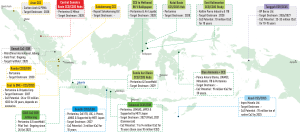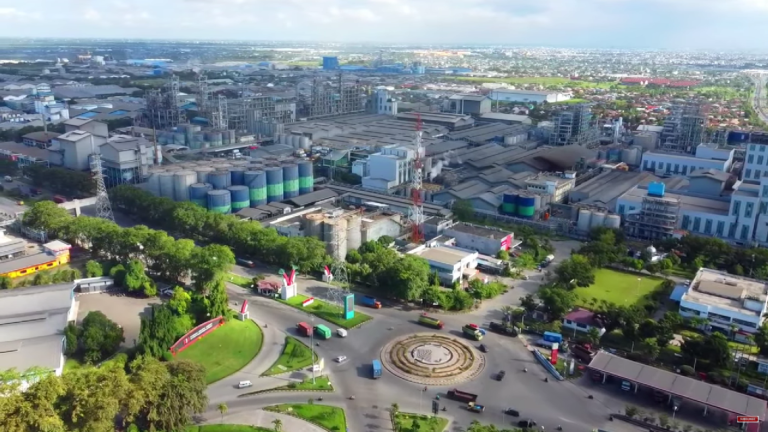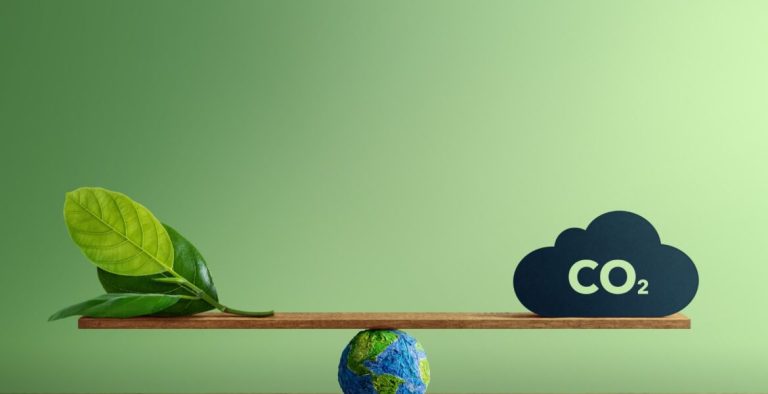Indonesia, a nation renowned for its rich biodiversity and unique geological formations, is making significant strides in the field of Carbon Capture and Storage (CCS). Given the urgent need to address climate change and reduce greenhouse gas emissions, CCS has emerged as a pivotal technology in Indonesia’s environmental strategy. Indonesia is actively positioning itself as the preferred partner in the region, specifically advocating for Carbon Capture, Utilization, and Storage (CCUS) activities and investments. The “Storage” aspect is a key element within CCS/CCUS as it determines the potential areas for carbon storage and prevents emissions from entering the atmosphere over the long term. This article will focus more on identifying various basins, defined as established oil and gas producing areas, that have potential as geological “Storage” sites across the country.

There are two significant types of geological storage across Indonesia: depleted oil & gas reservoirs and saline aquifers. Depleted oil and gas reservoirs, which are the result of historical E&P activities, are well-understood subsurface formations that can be utilized for CO2 storage. Saline aquifers, on the other hand, hold an even larger storage capacity, although detailed knowledge about their functioning and long-term storage capacity is currently limited. To delineate the potential for geological storage, two main characteristics of rock layers must be considered:
- The porous rock layer, also known as the injection zone, which is suitable for storing fluids such as CO2.
- The seal or impermeable rock layer on top of the injection zone, also known as the confining zone, which ensures that the CO2 does not migrate to the surface.
There are more than 60 sedimentary basins across the country, largely divided between Tertiary basins in the western arc and Mesozoic/Palaeozoic eras in the eastern archipelago. Due to extensive oil and gas exploration and production in the past, understanding and data availability regarding these basins have been commonly available and published over the years in various technical papers.
Basins such as Northwest Java and Kutei may have large storage capacities in depleted fields. These basins also have a comparative advantage due to their proximity to industrial emitters and pre-existing infrastructure, which could be converted for future CO2 transportation facilities from capture points to storage reservoirs such as Jatibarang, Parigi, Cibulakan Group, etc. On the other hand, East Java basins, with Gundih and Sukowati, have the potential to become geological storage in the long term. This is because most of the oil and gas working areas within this basin have additional discoveries within various reservoirs, such as the deeper Ngimbang reservoir and potential shallow biogenic gas. Another gas discovery in the Kutei basin, coming from offshore Geng North, shows further potential for gas supply in the future.
Sumatera basins are known for massive oil and gas production in the past. Various reservoir formations such as Peutu or Arun in the north basin; Duri & Sihapas in the central basin; Talang Akar, Batu Raja, and fractured basement in the south basin have been the backbone of Indonesia’s oil and gas production for decades. For this reason, there is high potential for depleted Arun and Ramba to become geological sequestration sites. Recent discoveries at offshore Aceh within the Baong formation show that there are still remaining oil and gas reserves, resources, and exploration targets in Sumatera. The Natuna basin, while containing colossal oil and gas resource potential, is considered a remote area, and its high CO2 content might pose a major challenge to develop these resources in the future.
For the Eastern Indonesia basin, there is potential to become a geological storage site in the long term. This is due to massive oil and gas exploration and production activities within this basin. The Roabiba reservoir, located within the Bintuni basin, is known as a major LNG producer. Furthermore, the Tomori basin, located in Eastern Sulawesi, is also known as a gas supply area. The recent discovery of the Abadi field, located in the Northwestern Bonaparte basin, shows that Eastern Indonesia basins are expected to become gas supply areas in the near future. However, due to the large reserves, it is considered that these various basins might become geological storage sites in the long term.
Indonesia’s geological landscape presents a unique advantage. There are several basins which are still underexplored and have the potential to become oil and gas producers. On the other hand, the nation boasts numerous sedimentary basins which are considered mature and well-understood in terms of their geological conditions. These basins are prime candidates for CO2 storage, with the potential to serve as geological storage for surrounding industries that have high CO2 emissions.
The Indonesian Government has been proactive in identifying potential CCS cluster locations near major emission sources. Indonesia’s strategic location in the Indo-Pacific also allows for strong potential as a CCS hub, facilitating cross-border operations in transporting CO2 among neighbouring countries like Singapore, Malaysia, Timor Leste, and Australia.
Moreover, Indonesia’s commitment to CCS is not just a standalone effort but part of a larger regional collaboration. The Asia CCUS Network (ACN) has recognized Indonesia’s potential as a regional CCUS hub due to its vast sedimentary basins suitable for CO2 storage. This recognition is backed by research estimating Indonesia’s potential storage capacity of CO2 at the basin level, which is crucial for the deployment of CCS/CCUS projects in Asia.
In conclusion, Indonesia’s active engagement in CCS technology demonstrates its dedication to a sustainable future. By leveraging its geological advantages and regulatory frameworks, Indonesia is poised to become a key player in the global effort to combat climate change. The nation’s progress in CCS serves as a beacon of innovation and environmental responsibility, inspiring other countries to follow suit in the journey towards a greener planet.”




